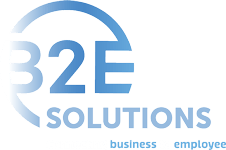Filling holes in your employee roster is time-consuming and expensive. With a vacant position taking on average 42 hours and costing $4,000 to fill, it’s no wonder business leaders are working hard to retain their people. But, where do you start? Keeping employees satisfied with bonuses and salary boosts can help, but those benefits are typically short-lived. Employee retention requires more - it takes time, purpose, and a willingness to adapt to workforce demands. If you’re up for the challenge, read on for a few must-try strategies.
1. Get the fit right.
Employee retention starts before a candidate is signed, sealed, and hired. Making sure you bring on the right people is a critical first step in your retention efforts. Your new hires must not only meet the job requirements, but they must also be a cultural fit with your company. Spend time really getting to know your candidates. Invite them to lunch with the team to see how they interact. Have meaningful conversations with their references to identify their prominent personality and character traits. And, don’t be afraid to put their skills to the test with a homework or onsite assignment that relates to the role.
Of course, proper vetting takes time. But, where possible, automate the most time-consuming and tedious recruitment activities. For example, you can use our HR solution, Orbit Human Resources, to quickly track comments and feedback from everyone involved in the interview process. Or, thanks to our integration capabilities, you can run hassle-free background checks for each and every candidate. Whatever the case, make your recruitment process more efficient, so you have time for human-to-human engagement.
2. Have a grander purpose.
Employees, especially millennials, like to feel like they are part of something bigger than their day-to-day role. While this may sound like a big undertaking, it doesn’t have to be. Start small and rally the team around a company-wide sales or production goal, making sure to recognize key contributors along the way. Or, take on a global initiative like world hunger from your own backyard by organizing corporate volunteer days at a local food bank.
Regardless of the purpose-driven initiatives you decide on, make communication a priority. Whether you hold regular town hall meetings, hang goal-tracking collateral, or send weekly email updates, build excitement through regular communication. In fact, many organizations use the company events and news feature within Orbit Human Resources to provide a single, consolidated home for all their “happenings.” This way, everyone within the organization knows where to go for updates!
3. Support mobility.
There’s no question that we live in an always-on, always-connected world. Deloitte research shows that US citizens collectively look at their phones more than 8 billion times per day. That’s a lot of screen time! And, when looking at the workplace, 81 percent of CEOs agree that mobile technologies are strategically important for their organization. But, it’s not just traditional office-setting CEOs that think this. A whopping 73 percent of industrial manufacturing CEOs ranked mobility as their top tech priority.
What does this tell us? To keep employees engaged, you must prioritize technologies that make it easy for teams to communicate and access information and systems - anywhere, anytime. For starters, consider migrating on-premises solutions to cloud-based alternatives. When evaluating new vendors, make sure their tools and products are mobile friendly. If they have a mobile app, consider rolling it out to employees. In fact, if you’re already a client of ours, you can take advantage your most common HR, timekeeping, and payroll tasks from our new and improved (not to mention free!) mobile app, HCMToGo.
4. Invest in employee growth.
According to the Society for Human Resource Management (SHRM) Employee Satisfaction and Engagement survey, 40 percent of workers said that their employer’s dedication to their professional development influences their job satisfaction. And, with job satisfaction being a key factor in employee retention, you may want to take a hard look at what you’re doing to advance your employees. Plus, isn’t their success your success? Helping your employees advance their skill sets and proficiencies is also an investment in your company.
Talk to your teams to figure out what resources, tools, and opportunities they need to succeed and grow. Whether you provide regular trainings, mentorship opportunities, or apprenticeship programs, support your initiatives with communication, follow through, and evaluation. Many organizations use Orbit Human Resources to manage employee growth and succession-planning efforts. Our tool helps you track employee skills and certifications, define training courses, and schedule classes and attendees. Using reporting, you can even monitor open seats and track employee participation, so you can improve going forward.
One part human, one part technology.
The most successful employee retention strategies must involve humans. They require activities that only humans are capable of, like listening and making connections. However, all of this takes time, which is why the best employee retention strategies also involve a non-human element. Powerful technologies and tools, like our suite of human capital management (HCM) products, help organizations automate and streamline time-consuming and tedious tasks so there’s more time for the human-to-human stuff. Have questions about how we can help support your employee retention efforts? Contact your Client Service Representative or send us a note today!



.png)






